- Register
- Log in to Tune-In
- Wishlist (0)
-
Shopping cart
(0)
You have no items in your shopping cart.
Beatles News

The Beatles’ breakup during the transition from 1969 to 1970 was a massive cultural shift for the entire world, but even that pales in comparison to the personal effects it had on each of the Fab Four’s lives. Paul McCartney, John Lennon, George Harrison, and Ringo Starr’s tenure as a commercial band might have been relatively short, but that seven-year stint was like an artistic lifetime.
For most of the members of the band, their next moves post-Beatles were a little more obvious. McCartney, Lennon, and Harrison were all individually talented songwriters, which made their career transition to solo artists or members of other bands a bit easier. But Starr was the drummer. His path forward wasn’t so clear-cut.
Ringo Starr Reflects On What It Was Like After Beatles Breakup
Depending on which conflict or walk-out you consider to be the final straw in the Beatles breakup, the band’s dissolution started between 1969 and 1970. Logistical issues like collecting contract signatures made the process even muddier. Regardless of the official date, the Fab Four were no more by 1971. Paul McCartney was writing his own music. John Lennon was busy with The Plastic Ono Band with his wife, Yok details
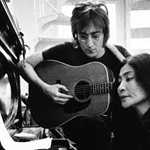
Yoko Ono – musician, artist, activist and the 92-year-old widow of the late John Lennon – took the brunt of the vitriol when The Beatles broke up in 1970, and details revealed in a new documentary film “One to One: John & Yoko” highlight her personal struggle.
Audio recordings from the early 1970s – the years that immediately followed the Beatles’ split – are featured in new documentary “One to One: John & Yoko,” out Friday, in which Ono discusses the harassment she faced. While her presence during Beatles recording sessions in the late 1960s famously caused tension, Ono always denied playing such a starring role in the end of the Fab Four.
“I’m supposedly the person who broke up the Beatles, you know? When I was pregnant, many people wrote to me saying, ‘I wish you and your baby would die,’” Ono says in the film.
She goes on to say that when she’d walk down the street with Lennon, “people came to me saying things like I’m ‘an ugly Jap.’ They pulled my hair and hit my head and I was just about to faint.”
Around that time, she added, she suffered three miscarriages.
details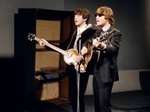
Ian Leslie’s “John & Paul: A Love Story in Songs,” takes a detailed look — 426 pages — at how John Lennon and Paul McCartney worked together from their meeting as teenagers until John’s death.
Had McCartney not decided at age 15 to go hear Lennon’s band playing in a Liverpool suburb, the world would have been denied the multitude of Beatle songs that brightened a generation and brought escalating musical innovation to rock music.
As Leslie affirms in the book, Lennon and McCartney early on developed a personal and creative chemistry that allowed them to elevate each other’s work to the timeless song classics still heard around the world.
And into that relationship dives Leslie, analyzing the mountain of articles and books written about the Beatles and interpreting messages the two men were sending to each other in their solo songs, particularly after the band’s break-up when both were writing and performing as solo acts.
Leslie focuses on exploring the often-tortured relationship between the introverted, sometimes jealous and frequently depressed Lennon and the more outgoing, driven and business-like McCartney.
Leslie’s compr details

In 1972, the FBI tapped John Lennon and Yoko Ono’s phone at the request of Richard Nixon, who worried Lennon might undermine his reelection bid. The paranoid president couldn’t have anticipated that the couple’s son would be thrilled to hear the captured conversations.
“Growing up without my father, most of my experience of him has been through videos and film and music,” Sean Ono Lennon says. “So I always feel like I’m gaining extra time with him. It was really great fun to hear the audio calls. It’s nice because it’s so candid and unfiltered.”
Those phone calls − some amusing, others goosebump-inducing − are at the center of the new documentary “One to One: John & Yoko” (exclusively in IMAX theaters Friday, in theaters everywhere April 18), which culminates in a benefit concert that would be Lennon’s only full-length post-Beatles show.
John Lennon (left) and Yoko Ono making music in New York in the early '70s, when they became involved with radical activism. "My parents ultimately felt they were in danger," Sean Lennon says. "The people they were hanging out with were pushing for violence, which th
details
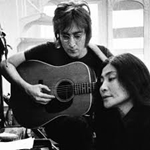
Kevin Macdonald’s immersive documentary follows the couple from their heady first days in New York to their galvanizing concert at Madison Square Garden in 1972.
That John Lennon contained multitudes and mysteries was clear to anyone who listened to him when he was in the Beatles and after he discovered himself anew with Yoko Ono, who united with him mind, body and soul. They first met in 1966, kept in touch and finally shared a long night that ended with their making love at dawn. “It was very beautiful,” Lennon later said. They were still together in 1980 when he was fatally shot in New York. He was only 40. In the years since his death, Ono — who turned 92 in February and has retreated from public view — has helped keep him vividly present through her art, music and activism.
Lennon and sometimes Ono are exhilaratingly present in “One to One: John & Yoko,” a documentary flooded with music and feeling that revisits a narrow if eventful period in the couple’s life. Directed by Kevin Macdonald and heroically edited by Sam Rice-Edwards (who’s also the co-director), the movie focuses on the early 1970s when Lennon and Ono were living in a modest apartment details
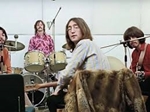
The Beatles' break up is a legendary moment in music history, but fans of the Fab Four think they've only just worked out some of the reasons Paul McCartney quit the group on this day in 1970
2nd July 1964: The Beatles, John Lennon, George Harrison (1943 - 2001), Paul McCartney and Ringo Starr, pictured on their arrival in London following a tour of Australia. Fans of The Beatles are only just working out the reasons they think Paul McCartney left the band.
Fans of The Beatles are convinced they've worked out why Sir Paul McCartney left the band 55 years ago today [April 10].
The Fab Four broke up for good in April 1970, with the band never playing together again after this point. McCartney, who said he was no longer working with the group on this day in 1970 sparked a media storm ahead of the release of his debut solo album.
His self-titled release featured hit track 'Maybe I'm Amazed' but was overlooked at the time due to the reaction to his departure from The Beatles.
McCartney, now 82, would later go on record and confirm the band had more or less ended before his statement, with John Lennon informing McCartney, Ringo Starr, and George Harrison that he intended to leave the grou details

In Beatles lore, no person is as divisive or controversial as Yoko Ono, the lover and eventual bride of John Lennon, who arrived on the scene as the band was facing its toughest hardships. It was a time of deep loss, psychological questioning and bitter in-fighting over leadership and business that would ultimately end in the band’s split.
But was Ono to blame for the breakup of the Beatles? The Beatles were already 'breaking up' before Ono came around
Regardless of public record in the intervening decades since the group went their separate ways, many fans still lay the blame at Ono’s feet. Addressing the rumor directly in 2012, Paul McCartney told British interviewer David Frost that Ono "certainly didn’t break the group up, the group was breaking up."
“There is not a Beatle fan out there that doesn’t have strong feelings toward her, either hating on her or thinking she and John had the greatest love story ever,” says Robert Rodriguez, author of Revolver: How The Beatles Reimagined Rock ‘n’ Roll, and host of the podcast Something About The Beatles.
Ono entered the world of the Beatles in 1966. The 33-year-old conceptual artist had been livin details

In March 1967, while recording the Sgt. Pepper track "Getting Better," John Lennon inadvertently took LSD after mistaking it for an amphetamine. Paul McCartney decided to take LSD alongside Lennon for the first time, leading to an intense bonding experience.
In his book John & Paul: A Love Story in Songs, author Ian Leslie suggests that such moments of vulnerability and support strengthened Lennon and McCartney's artistic synergy and personal connection
John Lennon and Paul McCartney changed the world with the 162 songs they wrote for the Beatles, but few demonstrate the creative and emotional complexities of their relationship quite like “Getting Better,” from the band’s 1967 opus, Sgt. Pepper’s Lonely Hearts Club Band. Speaking to PEOPLE 50 years after writing it, McCartney would cite the track as emblematic of their contrasting philosophical dispositions — with himself handling the bright and buoyant “It’s getting better all the time” chorus while Lennon offered the tart counterpoint: “It can’t get no worse.”
In John & Paul: A Love Story in Songs, author Ian Leslie details their union with perceptive insights details
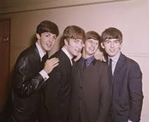
When I Want to Hold Your Hand topped the U.S. charts, Paul McCartney and John Lennon felt the pressure to write another hit song.
The Beatles had already won the hearts of fans in the U.K. and Europe, but soaring to the number one spot on the American charts in February 1964 took their fame to even greater heights. The band's song I Want To Hold Your Hand climbed swiftly to the number one spot in America just days before they landed in New York for their debut U.S. performance.
Dominating the top spot for seven weeks, the song triggered Beatlemania across the States. Amid this frenzy, and while touring in Paris, news of their chart-topping success reached The Beatles, leaving Paul to head straight to their hotel piano to write their next hit.
Paul ended up writing Can't Buy Me Love. Discussing the song, Paul said, "Can't Buy Me Love is my attempt to write a bluesy mode."
He further explained, "The idea behind it was that all these material possessions are all very well but they won't buy me what I really want. It was a very hooky song. Ella Fitzgerald later did a version of it which I was very honored by."
While John openly acknowledged the song was mostly Paul's, he claimed to have contr details

John Lennon and Paul McCartney were each other’s favorite audience. That was plainly clear as the besotted Beatles bantered, bickered and obsessed over the 23 years they were friends and rivals.
Ian Leslie’s new biography “John & Paul: A Love Story in Songs” (Celadon, 436 pp., out now) unpacks their intense and complicated relationship from their first meeting in 1957 to Lennon’s murder in 1980.
Along the way, there’s psychoanalysis (Leslie specializes in writing about human psychology, communication and creativity) and the occasional hair-curling discovery.
Nothing here is entirely new: Leslie relies on previously published interviews and conducted just one himself for the book, with “Let It Be” director Michael Lindsay-Hogg. But Leslie does an extraordinary job of providing context for familiar anecdotes, and there are many that will feel surprising.
Among the biggest revelations:
Paul McCartney planned to pursue a solo career if The Beatles never hit it big. The complex relationship between Beatles songwriters John Lennon and Paul McCartney is the focus of the new book "John & Paul: A Love Story in Songs."
When details

The Beatles biopic is officially happening, which means it's time to brush up on all there is to know about the Fab Four.
Actually, make that biopics—there are four of them: one for Paul McCartney (Paul Mescal), one for Ringo Starr (Barry Keoghan), one for George Harrison (Joseph Quinn), and one for John Lennon (Harris Dickinson). And naturally fan-casting has already started for the giant cast of characters in each of these men's lives. Specifically, their wives and girlfriends.
If you aren't up-to-date on who The Beatles were dating in the 60s due to reasons like not being born yet, let's start with a deep dive on Paul's famous relationships with the likes of Jane Asher and Linda Eastman.
Paul and Dot met at Casbah Club in 1959 and immediately hit it off. As in, they dated for two-and-a-half years and even got engaged. But since their relationship was largely pre mega-fame, not much is known about Dot and there aren't readily available pictures of her and Paul together. In fact, Beatles biographer Bob Spitz told The Globe and Mail, "She was very reluctant at first to talk. This takes her from being a very private person to a very public person. This was a story she had kept to herself for nearly details

Music icon George Harrison never understood Paul McCartney's 'fruity' Abbey Road song.
By 1969, the cracks that had formed between The Beatles during the recording of The White Album and Let It Be had turned into craters and they were on the brink of breaking up. However, they wanted to squeeze out one more hit album, Abbey Road.
Harrison had already quit the band once in January 1969, during the recording of Let It Be, due to rising tension between him and McCartney. He was also fed up with constantly being pushed to the side along with his music and eventually began hating all the tracks McCartney put forth.
Reflecting on his time in The Beatles during a 1977 interview with Crawdaddy, Harrison said: "Sometimes Paul would make us do these really fruity songs. I mean, my god, Maxwell's Silver Hammer was so fruity. After a while we did a good job on it, but when Paul got an idea or an arrangement in his head... But Paul's really writing for a 14-year-old audience now anyhow. I missed his last tour, unfortunately."
Whether or not McCartney's songs were good or not, Harrison had grown sick of working on them instead of his own. An over-arching tension began for Harrison during the recording of The W details

Pete Best, the drummer most famous for getting fired from The Beatles before the group shot to international fame, has retired. The news was announced by his brother Roag Best, who wrote on Twitter/X, “Well what an absolutely wonderful ride we’ve had. However, everything comes to pass.” (All Things Must Pass would’ve been too on the nose, we suppose.) “My brother Pete Best has announced today he is retiring from personal appearances and performing with the group. His daughter has informed me it’s due to personal circumstances.” Best (whose handle on the platform is “BeatlesPeteBest”) confirmed the news with a repost, adding, “I had a blast. Thank you.”
Best was an original member of The Beatles, and his family was closely entwined with the group. His mother, Mona Best, owned the Casbah Coffee House where the band played many of its early gigs—the band members even helped her decorate the space—and she became a pseudo-manager for them in their early days. (She shared a son, Roag, with The Beatles’ longtime road manager Neil Aspinall.) But when the band fired Pete in the early 1960s in favor of Ringo Starr, he ended up quitting the music b details
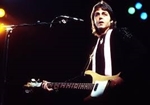
Paul McCartney’s Venus and Mars charts again in the U.S. after a massive 5,435% sales spike.
Paul McCartney doesn’t need to release anything new to bring himself back on the Billboard charts, though, of course, he’s not yet done creating. The legendary musician appears on a pair of rankings this week — not under his own name, but rather with the moniker he used during one of the most successful periods of his post-Beatles career. As fans raced to get their hands on a reissued version of a decades-old title, the beloved project experiences a surge in sales.
Wings’s Venus and Mars is back on two Billboard charts. The full-length reappears on the Vinyl Albums tally at No. 23 and also lands on the Top Album Sales ranking, where it settles at No. 45. The set isn’t brand new, but now it’s back in the conversation in the music industry, if only for a short time, as interest in the collection grew exponentially.
Venus and Mars is now back among the bestselling vinyl titles in the U.S. for just the second time ever. It once climbed as high as No. 11 on that ranking, nearly giving Wings a top 10 on a list that didn’t even exist when the album details
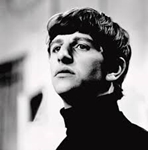
She told the story of how she met Ringo Starr
The allure of the Beatles endures around the globe, with their music continuing to enchant audiences, and forthcoming major films about the band's lives generating immense interest. Consequently, numerous stories regarding the '60s music legends persist in circulating. One particularly fascinating account provides a glimpse into what it was like to date Ringo Starr prior to his rise to fame.
A woman's brother shared a story on Reddit, asserting that she met Ringo, then known by his real name, Richard Starkey, while at Butlin's in North Wales. According to the story, the two allegedly began dating after meeting at the popular British holiday resort.
The brother penned: "My sister dated Ringo at Butlin's in North Wales before he joined the Beatles. When the Beatles first televised appearance came out on UK TV in 1962, I (10M) and my sister (18F) both watched it.
"She suddenly sat bolt upright in her chair and said 'I know him! That's Dick Starkey'. Ringo had been playing with Rory Storm and the Hurricanes at a Butlin's 'holiday camp', or Stalag as it was known to the clients, that our extended family went to, and it turns out sh
details
